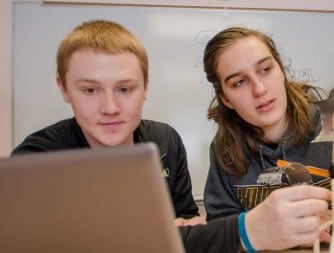 The Fall 2017 semester at Michigan Tech brought something new to first year engineering students taking courses ENG 1001 and ENG 1101: Inclusive Access. The result—a tremendous cost savings.
The Fall 2017 semester at Michigan Tech brought something new to first year engineering students taking courses ENG 1001 and ENG 1101: Inclusive Access. The result—a tremendous cost savings.
In an effort to offset the rising costs of course materials, Michigan Tech’s Campus Store—together with a text book publisher, an e-book vendor, and Department of Engineering Fundamentals faculty—provided students course material access (in the form of an e-book) through Canvas for the first day of classes. Students were emailed prior to the semester to explain the process. They could choose to opt-out of the Inclusive Access program within the first 10 days of the semester and seek alternatives on their own. If they didn’t opt-out or drop the course, their tuition accounts were charged.
The cost savings for 896 Engineering Fundamental students exceeded $72,000. Course materials that formerly cost students $230 as physical books only cost them $149 digitally through the Inclusive Access program. The same course material is used throughout the First Year Engineering Program sequence, and students can access the material for two years.
Research indicates students who have access to course materials have a higher success rate in the classroom than those that choose not to use them. The Campus Store is looking to expand the Inclusive Access program to help increase the chances of student success.




 Additional information may be required
Additional information may be required